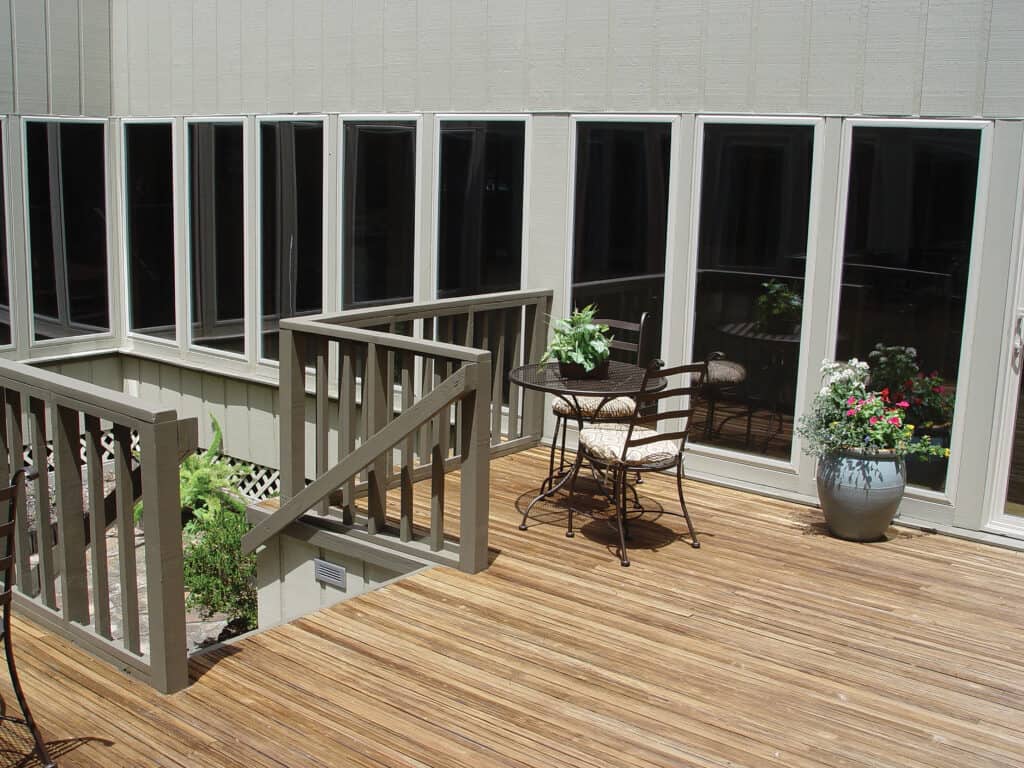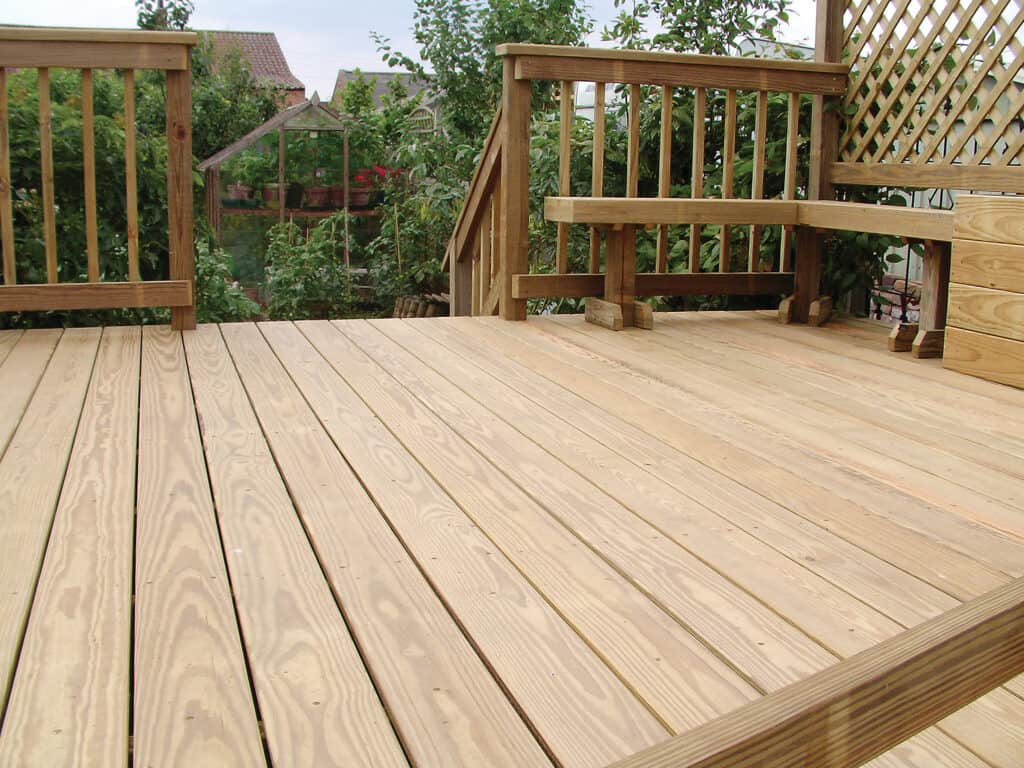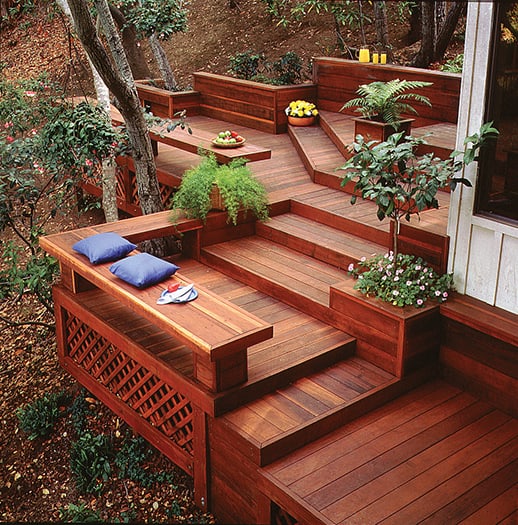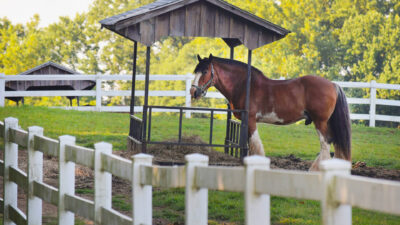It’s springtime, and that means everyone is looking to get their backyards in tiptop shape for fun, food, and festivities. Where do they usually congregate? The deck, naturally!
And if they don’t have one, now is the time to get to work on construction. But where should they start?
First things first: Pressure-treated Southern Pine is the most popular real wood decking choice. To satisfy the most discriminating homeowner, Southern Pine decking is offered in a variety of sizes, profiles, and grades, along with value added benefits of built-in water-repellent and re-drying options.
Now that they have their wood, it’s time to consider the intended use:
• Where will the deck be located?
• Does it need to accommodate furniture or an outdoor grill or kitchen?
• How many people will use the deck at any given time?
It Starts with Support
Once the size, shape, use, and location of the deck are determined, it’s time to focus on the most important part – the support structure. There are two common methods to support a deck:
• Construct a non-ledger deck supported and braced on all corners by posts to support vertical loads.
• Attach the deck directly to the joist system of the house with a ledger board.
If using a ledger attachment, lumber should be flashed to prevent moisture intrusion and decay. In normal backyard service, copper flashing is recommended, fastened with copper flashing nails (use like metals to avoid galvanic corrosion). Stainless steel flashing and fasteners are recommended in coastal applications. Aluminum flashing is not compatible with the copper in treated wood. Plastic is also not recommended since the flashing may become brittle and crack because of UV exposure.

When it comes to support, review the post strategy to ensure a safe deck load transfer to the footings. Deck posts generally are solid-sawn wood but may also be glued-laminated timber or structural composite lumber.
The Prescriptive Residential Wood Deck Construction Guide recommends a minimum 6×6 (nominal) post size for residential decks, which is conservative for most deck applications, allows a deck height of up to 14 feet, and provides adequate bearing for beams. Diagonal bracing is required for decks greater than 2 feet above the ground.
Support posts can be notched within limits to accommodate bearing for the beam. However, notching may expose untreated wood to decay. Notching also reduces the post cross section, thus reducing strength. To avoid notching, use a post cap connector to attach the beam directly on top of the post. If high lateral loads are anticipated (wind or seismic), notching is prohibited.
What About Decking?
Southern Pine decking and 2×6 lumber used for decking are both rated to span up to 24 inches on center when installed perpendicular to the joist system (boards must span across at least three joists). However, many pros recommend limiting the R.E.D. span to 16 inches on center to reduce board deflection (springiness). When decking is installed diagonally, space joists 16 inches on center for both R.E.D. and 2×6.

The width of pressure-treated Southern Pine decking may vary because of moisture content, so spacing between boards should be adjusted at installation to compensate for shrinkage as the wood dries.
When attaching fasteners near the ends of decking, it is best practice to pre-drill holes to help prevent splitting, and double up joists where deck boards abut to improve the fastener grip. As a side note, the most common decking fasteners are screws or nails. Hidden fastener systems are always an option, too.
How to Finish, Protect, and Maintain a Deck
Horizontal surfaces, especially in decks, are often exposed to the direct rays of the sun and tend to collect moisture; therefore, the weathering process is greatly accelerated.
Although treated wood is protected against decay and termite attack, it’s recommended to apply a water-repellent sealer to all exposed surfaces. This sealer will help control surface checking (splitting or cracking) and provide an attractive appearance. Reapplication is recommended every year or two, depending on the severity of exposure.
Most importantly, treated Southern Pine should be dry before any type of finish is applied. Just remember drying time will depend upon the product used and local climate conditions. Stain and paint manufacturers typically recommend a waiting period – from one week to two months – before applying paint or stain to treated wood.
However, the finish can be applied right away if the project was built with material that was kiln-dried after treatment (KDAT).
Here’s a quick primer on paint vs. stain:
• Paint: Most manufacturers recommend two coats of an acrylic latex paint for best results on treated Southern Pine.
• Solid-color stains. They’re not recommended for horizontal surfaces, as they typically do not withstand the wear of foot traffic.

Over several months, pressure-treated Southern Pine will weather naturally to a silver-gray color. Should someone decide to paint or stain the treated material, it will accept a finish similar to untreated Southern Pine.
On weathered decks, the wood’s original color often can be restored (and surface mildew and mold removed) using one of the available products, sold as deck cleaners, brighteners or restorers. If a pressure washer is used to clean the deck or porch surface, take care not to remove part of the wood itself by using lower pressure to clean.
Need more information, including span tables for decks? Check out the Southern Forest Products Association’s Southern Pine Decks and Porches publication at www.southernpine.com/publications.






